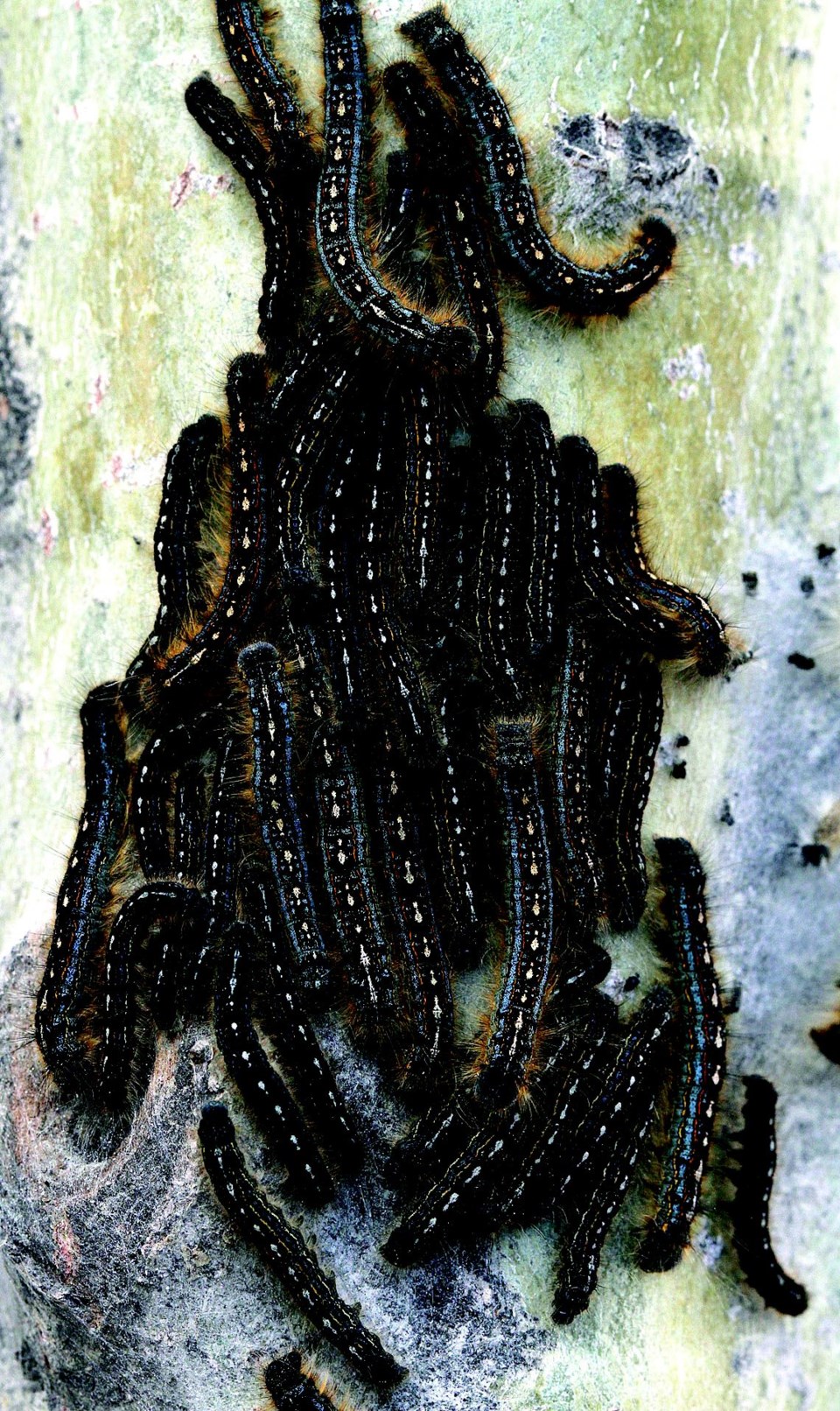They're voracious eaters, they leave a mess behind and they refuse to listen to adults who complain about them.
Teenagers?
No.
We're talking forest tent caterpillars.
Deciduous trees around the city are under attack. Left untreated, the caterpillars could stress out those trees enough to kill them.
The tiny creatures emerged from clusters out of the trees and onto the doorstep of Evergreen Pharmacy at 1467 Third Ave. last week and customers unwittingly crushed them into a slimy mass on the soles of their feet as they walked by the store.
"It's all over the city and everybody's complaining about it," said Myrna Kewin, an Evergreen Pharmacy cashier. "All the trees on Third Avenue were planted last year because they all died the year before because somebody forgot to turn the water main on. Now they're all infested with bugs.
"We phoned the city and they said we don't have funding to spray them. They said they don't even remove anthills in all city parks, with children running around in a sandbox. Their funding was pulled last year, so they don't do any pest removal anywhere. I was stunned. That is completely unacceptable for them to do nothing."
The affected trees -- aspen poplars -- line both sides of Third Avenue from Victoria to George streets, spaced about five metres apart.
"All of sudden there were these huge clusters of caterpillars and they're the size of football on the trunk of the trees," said Kewin. "They were crawling right into our store. You can see the holes in the trees right now and all those leaves are going to be gone."
City spokeperson Chris Bone was unaware of the problem when contacted Friday afternoon and city parks staff were unavailable for comment over the weekend.
Ignoring the problem is the wrong approach, according to Jos Van Hage, owner of Art Knapps Plantland's two Prince George stores.
"I think that's kind of ridiculous, that's really dumb," Van Hage said. "When tent caterpillars come back three years in a row and each of those trees costs $400 or $500 to replace them, it will cost the city more than what it costs to spray them with some BTK [bacteria]. One person could spray all the trees in one day."
Van Hage says the worst is yet to come.
"It's going to be devastating in town, I think," said Van Hage.
"All the choke cherries at CN Centre have clusters of caterpillars just coming out of the eggs right now and are just ready to come off the tree in about a week. People should go into their yards and check your trees, especially poplars, choke cherries or maydays. With this weather, the caterpillars have now hatched."
Van Hage says to look for what looks like a silk tent, where between 300 and 500 caterpillars will be clustered. Those clusters can be removed and dropped into soapy water to kill them. Once they hatch, the caterpillars will eat as much as they can and will strip the tree of all its leaves, then move on to another tree that has leaves. The stripped tree will respond by putting out new leaves but Van Hage said those leaves won't have enough time to grow and the tree will go into the winter stressed. That stress, especially when compounded over several years of caterpillar attacks, could be enough to kill it.
He suggests use of the chemical malathion to kill the caterpillars while they are in the nesting phase. Malathion is a organophosphate insecticide that attacks the nervous system of insects, but care has to be taken when using it because of its potential harmful effects on humans and other animals.
Once the caterpillars start to spread, Van Hage recommends the use of BTK, a natural bacterium commonly used for mosquito control. It paralyzes the stomach of insects and they stop eating and die. Other products in a spray form that will kill the caterpillars are Ambush or Sevin.
The trunks of trees can be painted with Tanglefoot, also an organic substance. Axle grease works as well when spread on tree trunks, but if the grease gets into the ground it can kill the tree.
Evergreen sells sticky sleeves to wrap trees and Kewin said store staff would have used it had they known earlier the city would not be spraying the caterpillars.
UNBC professor and forest entomologist Staffan Lindgren warned in a Citizen story last July during an infestation of moths that caterpillars would be more of problem in the city this year and that prediction has come true. Tent caterpillars thrive in three-year cycles, meaning next year could be problematic as well. Van Hage said the last major caterpillar infestation in the city happened 12 years ago.
"I hope this is only certain pockets of town and that it's not going to go all the way through town but we won't know that until they start to hatch," said Van Hage.
He advises city staff to act quickly before the trees are ravaged.
"Be proactive instead of waiting for it to happen,"Van Hage said. "It's better to not mow a lawn for a week or two weeks and go after this problem instead of waiting to see what happens.
"That's the same attitude as when the pine beetle came -- let nature take care of it. Normally yes, but it doesn't always happen that way."


.png;w=120;h=80;mode=crop)
